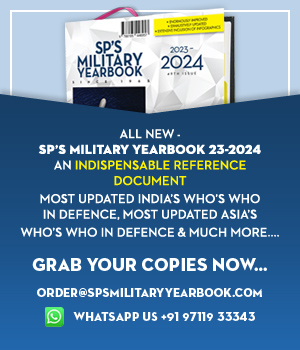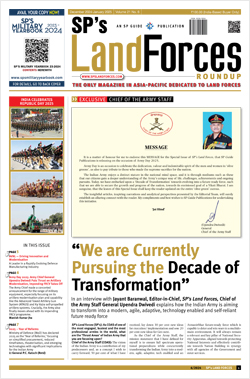INDIAN ARMED FORCES CHIEFS ON OUR RELENTLESS AND FOCUSED PUBLISHING EFFORTS

The insightful articles, inspiring narrations and analytical perspectives presented by the Editorial Team, establish an alluring connect with the reader. My compliments and best wishes to SP Guide Publications.
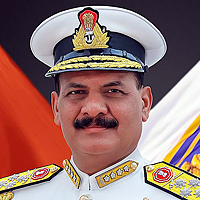
"Over the past 60 years, the growth of SP Guide Publications has mirrored the rising stature of Indian Navy. Its well-researched and informative magazines on Defence and Aerospace sector have served to shape an educated opinion of our military personnel, policy makers and the public alike. I wish SP's Publication team continued success, fair winds and following seas in all future endeavour!"

Since, its inception in 1964, SP Guide Publications has consistently demonstrated commitment to high-quality journalism in the aerospace and defence sectors, earning a well-deserved reputation as Asia's largest media house in this domain. I wish SP Guide Publications continued success in its pursuit of excellence.
- MoD initiates comprehensive review of Defence Acquisition Procedure 2020, pushes for defence reforms
- G7: The Swansong
- Kalinga Connect: South Asia to Polynesia
- Must Credit DRDO for Operation Sindoor, now what is next for defence R&D?
- The layered Air Defence systems that worked superbly, the key element of Operation Sindoor
- Operation Sindoor | Day 2 DGMOs Briefing
- Operation Sindoor: Resolute yet Restrained
Army Chief’s Nepal Visit
 |
The Author is Former Director General of Information Systems and A Special Forces Veteran, Indian Army |
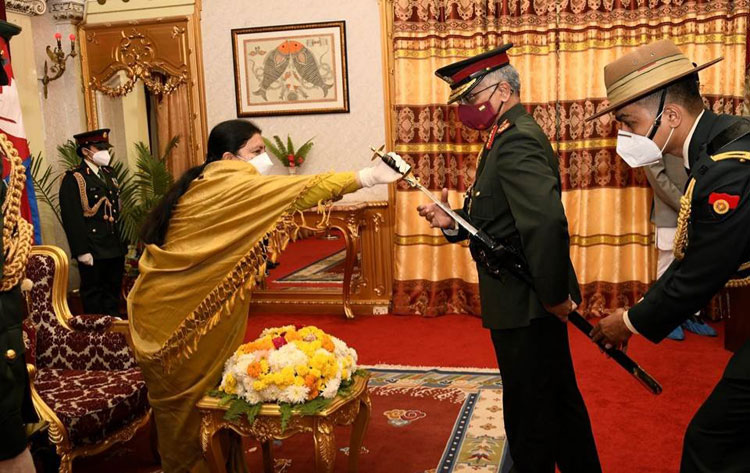
Indian Army Chief, General Manoj Mukund Naravane, accompanied with his wife Veena Naravane, recently made a three-day visit to Nepal beginning November 04. Nepal had not cleared General Naravane’s visit on February 03, 2020 reason for which was later cited as COVID-19 but the pandemic had not struck India and Nepal then. On May 05, 2020, when Defence Minister Rajnath Singh inaugurated a road to Lipulekh Pass on the watershed boundary with Tibet for Kailash-Mansarovar pilgrimage, Nepal called it territorial violation, which India rejected. General Naravane had told media, “Nepal’s ambassador had mentioned that the east side of Kali Nadi (Mahakali River) belongs to them. There is no dispute in that. The road which we have constructed is on the west side of the river…. they might have raised the issue on the behest of someone else. That is very much a possibility.”
Nepal’s objections coincided with Chinese incursions across the Line of Actual Control (LAC) in Ladakh and Sikkim. Thereafter on May 20, Nepal’s Prime Minister K.P. Sharma Oli released a new map of Nepal that included Indian areas of Lipulekh, Limpiyadhura and Kalapani areas of Pithoragah District without prior discussions with India. Nepal established new posts at Changru near Kalapani and for the first time in 70 years deployed army personnel at this border with India. Nepal radio commenced anti-India propaganda.

Prior to General Naravane’s visit, Nepal’s Foreign Minister Pradeep Kumar Gayali said he “personally felt these engagements are positive developments” and added, “Such visits will help strengthen bilateral ties between our two countries and will also help solve the issues that have cropped up”. But ironically it was Gayali who refused to discuss the issue with the Indian mission in Kathmandu before Oli released the new map of Nepal.
General Naravane was the first high-ranking official visit from India after Nepal raised the boundary dispute. Earlier on October 14, Oli took over the defence portfolio from Deputy PM Ishwar Pokhrel who was critical of India. This change was interpreted as a signal to India for improving relations but whether such a postulation is correct only time will prove. During his visit, General Naravane called on Prime Minister Oli, interacted with his counterpart General Purna Chandra Thapa and was conferred the title of Honorary Chief of the Nepalese Army by President, Bidhya Devi Bhandari at the President’s residence ‘Shakti Niwas’, which is a unique reciprocal arrangement between India and Nepal. He was also presented with a sword and scroll during the function attended by Prime Minister Oli, Chief of Army Staff Purna Chandra Thapa, Indian Ambassador to Nepal Vinay Mohan Kwatra and other Nepali and Indian officials. A banquet was hosted in honour of General Naravane. General Naravane was flown to take a closer look of Mount Everest and later visited the Nepal Army Staff College.
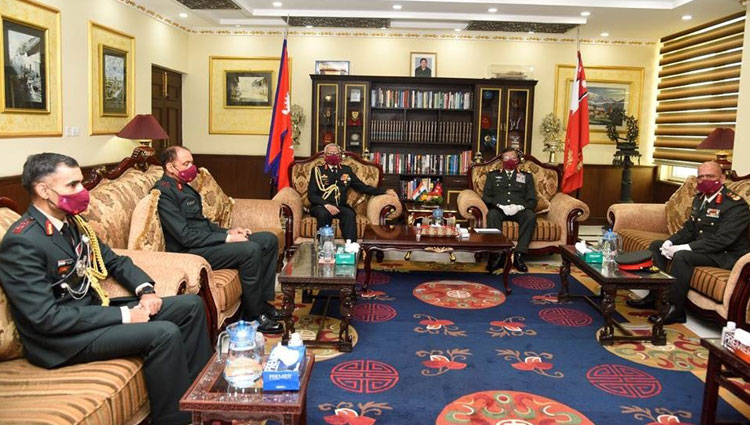
In his meeting with General Naravane, PM Oli said Nepal and India have a long-standing and special relationship and expressed hope that the present issues between the two countries will be resolved through dialogue. Oli’s foreign policy advisor Rajan Bhattarai tweeted, “The Prime Minister said that there was a tradition of conferring the status of honorary Maharathi on the respective army chiefs of the two countries. During the meeting, the PM expressed confidence that the issues between the two countries would be resolved through dialogue.” During the visit, General Naravane conveyed his gratitude for the honour bestowed upon him and also discussed measures to further enhance bilateral cooperation. India gifted medical equipment including X-ray machines, computed radiography systems, ICU ventilators, video endoscopy units and anesthesia machines for two field hospitals of Nepalese Army, plus additional ventilators to assist the Army fight Covid-19.
India and Nepal historically have symbiotic relations, great bonhomie between their armies and are traditionally sensitive to security and economic concerns of each other. The bedrock of military relations and military diplomacy rests on thousands of Nepalese serving in Indian Army. Nepal presently has some 1,28,000 Army veterans whose pension is paid by India. But the main hindrance in India-Nepal relations is China that is drawing Nepal deeper into its strategic sphere and wants to use Nepalese territory against India. Mao Zhedong had termed Nepal one of the five fingers of Tibet, calling latter the palm of China – implying China must annex the palm and its fingers. Whether Nepal’s Communist Party (NCP) has understood China’s true intentions is not know but China’s recent encroachment in Nepal’s with PLA and Chinese border police occupying Nepalese Territory at Limi Lapcha area of Namkha Gaupalika (rural municipality) of Humla Region, and calling it Chinese territory has jolted Nepal. To save face, Nepal has officially denied any encroachment but in June 2020, Nepal's Survey Department of Agriculture Ministry had claimed in its report that China encroached in 10 places which comprise nearly 33 hectares of Nepalese land and that China has also been diverting the flow of rivers to increase its territory.
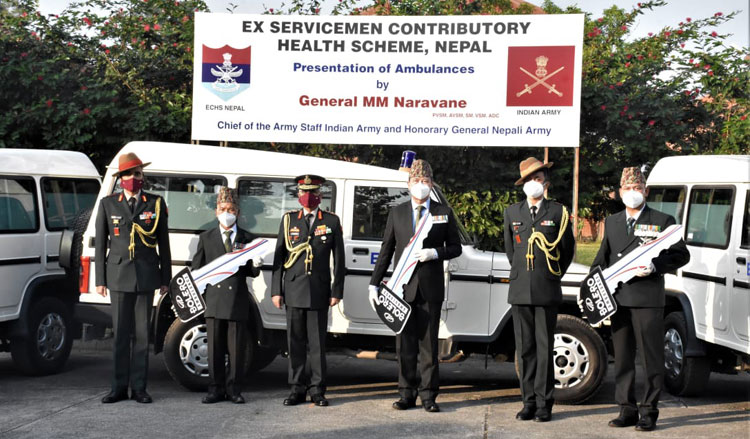
Recent reports from Nepal indicate Oli may split the NCP signaling dissent is brewing though Oli and Pushpa Kamal Dahal alias Prachanda were both leaders in the China-sponsored Maoist insurgency that killed 19,000 Nepalese (1996-2005) and internally displaced 1,00,000-1,50,000. Following massacre of Nepal’s royal family in June 2001, China brought together Communist Party of Nepal (UML) and Communist Party of Nepal (Maoist Centre) to establish a government in Nepal, both factions having merged into the NCP. However, despite Chinese encroachment of Nepal’s territory, the Oli administration appears obdurate towards India with news that Nepal wants to conduct census in areas of Lipulekh, Limpiyadhura and Kalapani areas, which naturally India will not allow, these being part of India.
On October 21, 2020, Samant Kumar Goel, Director R&AW visited Nepal and met PM Oli. What transpired between the two is not known but Goel possibly discussed Pakistan-sponsored anti-India activities via Nepal and China’s forays in the region. General Naravane’s visit provides the springboard to reset India-Nepal relations. Indian Foreign Secretary Harsh Vardhan Shringla too is likely to visit Nepal in the near future. According to one report, Nepal’s new map showing Indian areas of Lipulekh, Limpiyadhura and Kalapani part of Nepal has been removed from school text books in Nepal, which if true is a good beginning. The ball to reset India-Nepal relations is in the court of Nepal’s communist regime.




